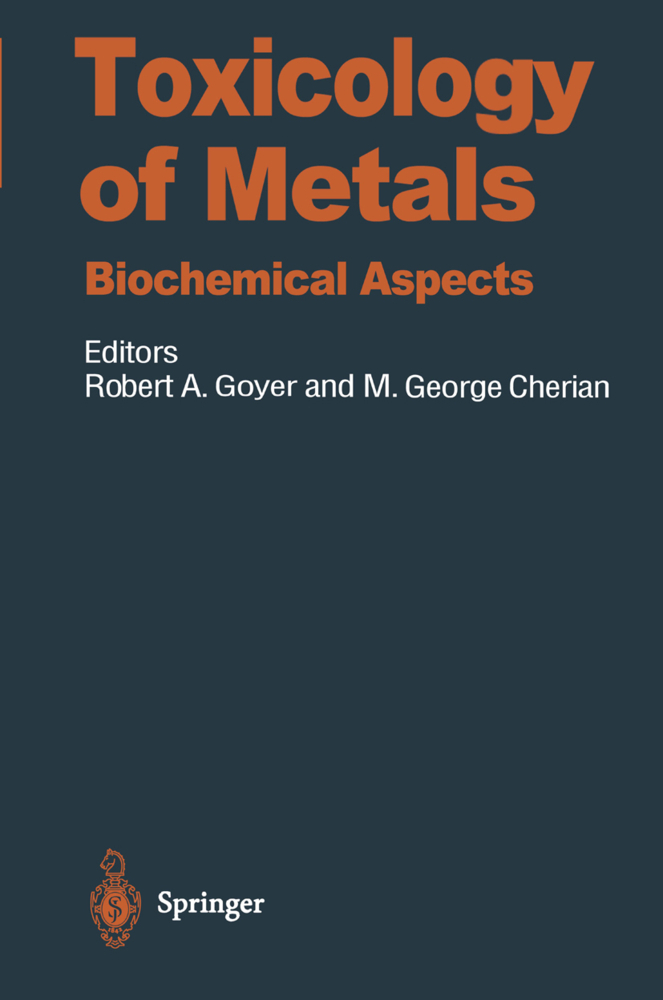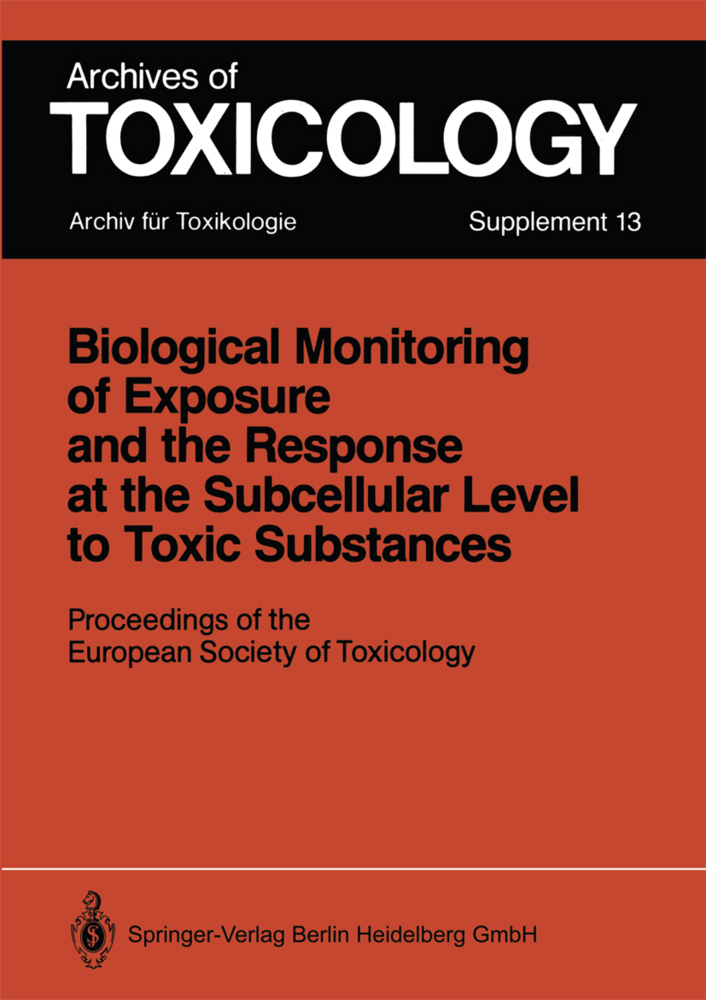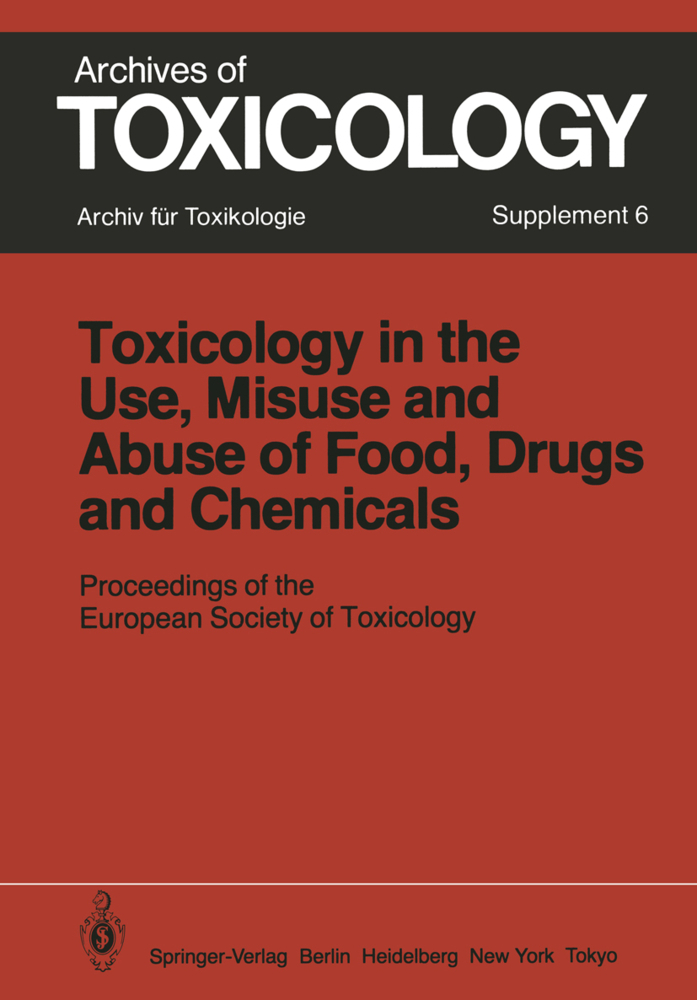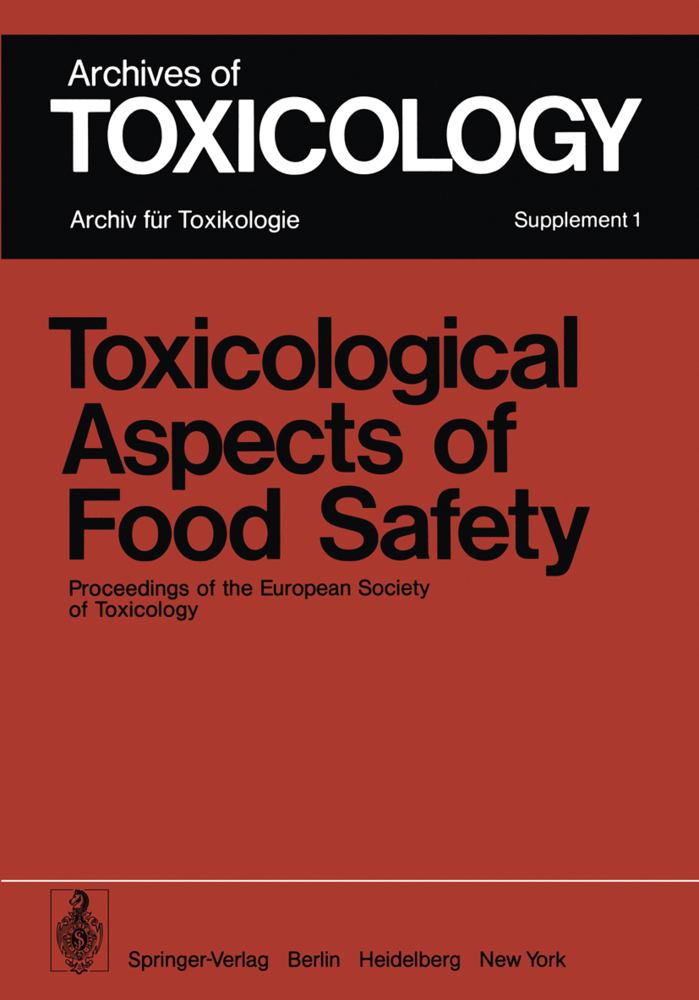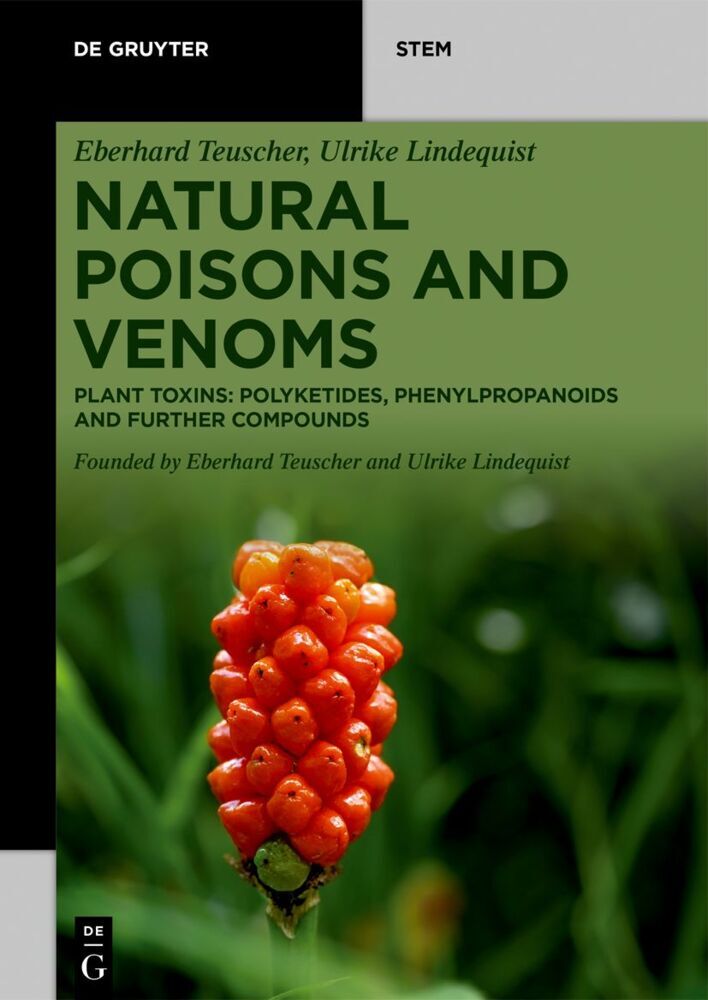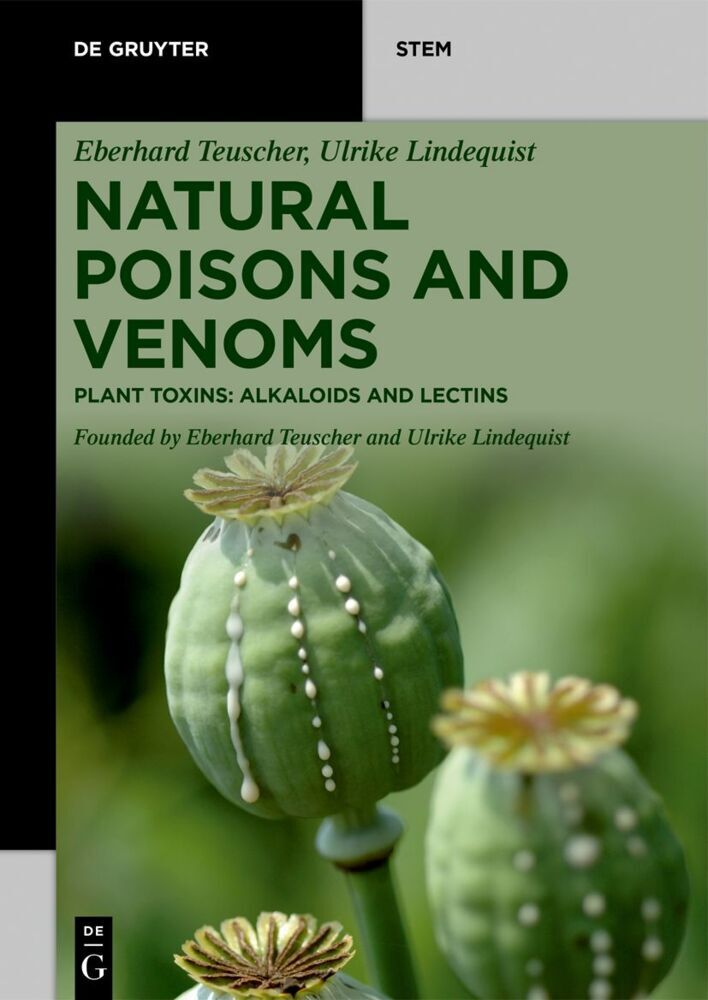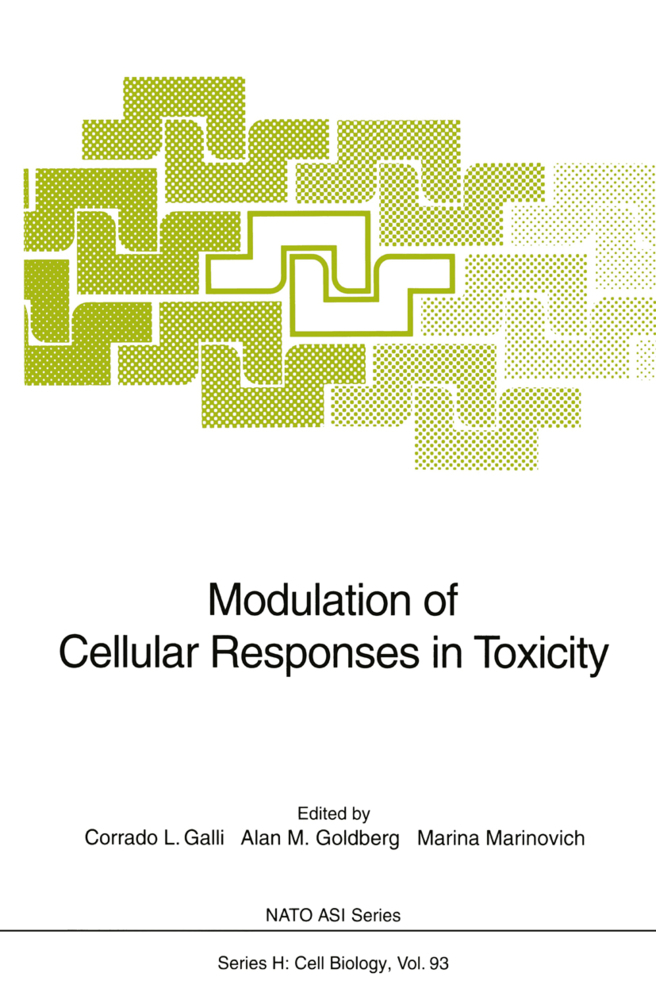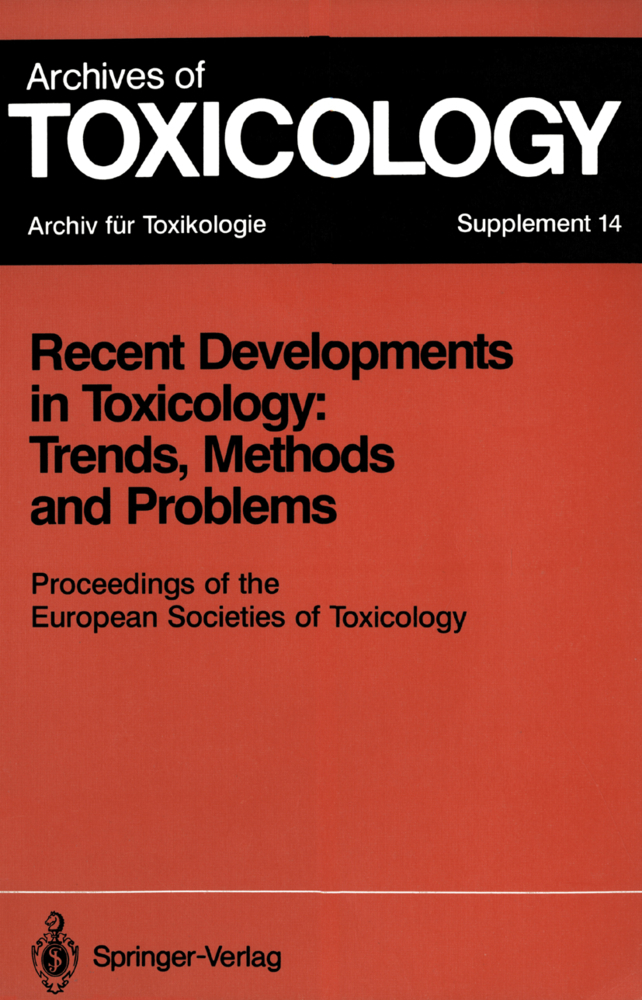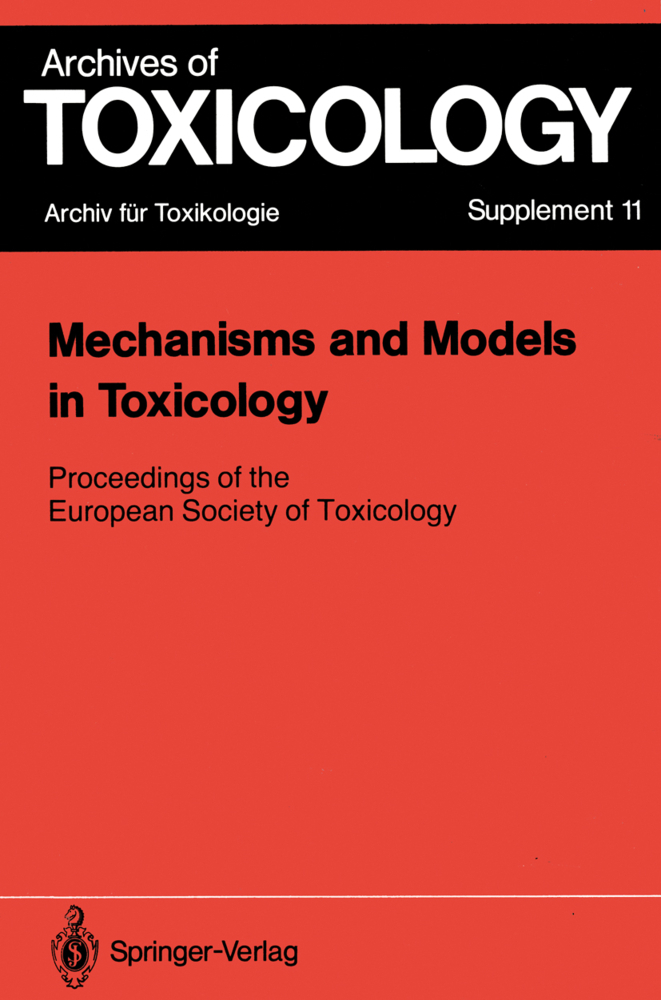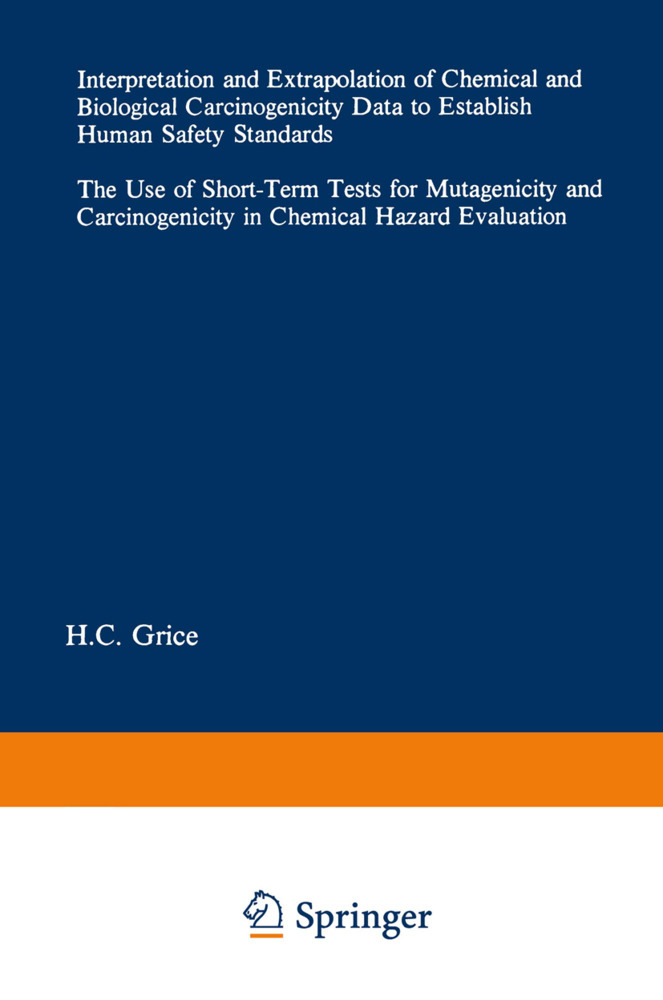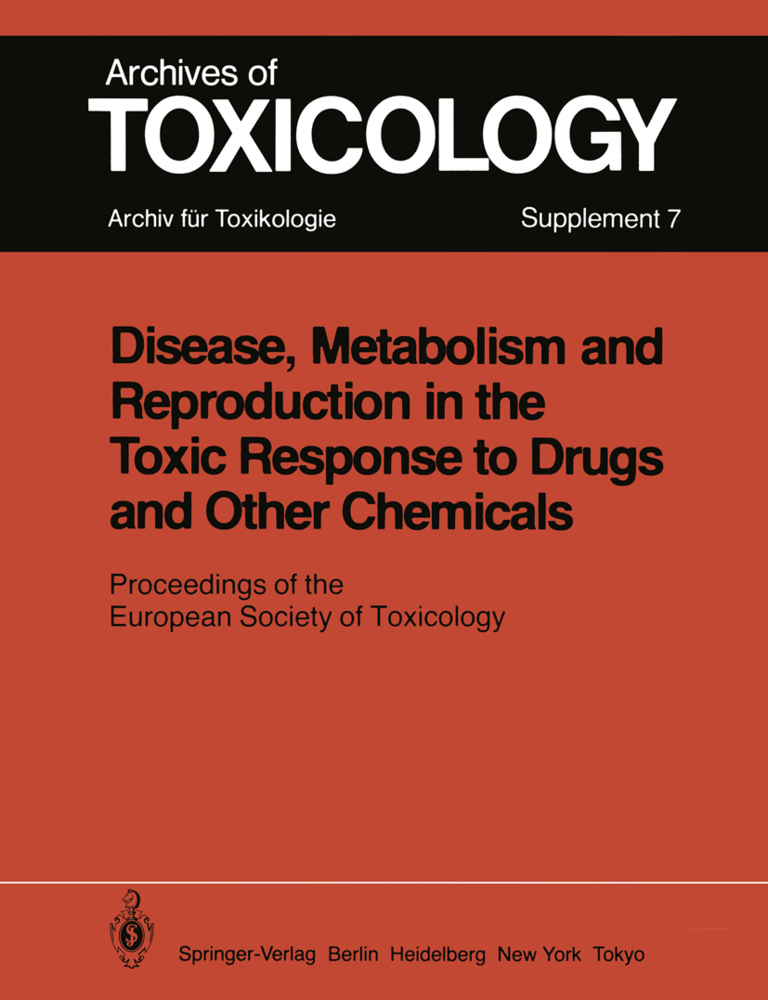Toxicology of Metals
Biochemical Aspects
Toxicology of Metals
Biochemical Aspects
The toxicology of metals has been concerned in the past with effects that produced clinical signs and symptoms. However, this view of metal toxicology has expanded in recent years due principally to two advances. There has been a considerable increase in our knowledge of the biochemical effects of metals. In addition, biomarkers of toxicity can now be recognized that identify toxicity at levels of exposure that do not produce overt clinical effects. Thus, the toxicology of metals is now focused on nonclinical events that reflect adverse health effects. This new awareness has produced the challenge of determining the lowest adverse level of exposure. With increasing analytical sensitivity and methodologies to detect small changes at the molecular level, the lowest level of exposure of some toxic metals, like lead, is very small. Indeed, for metals in which there is no biologic requirement, it may be questioned whether there is a level of exposure that does not produce some degree of toxicity. For essential metals, the question is being asked as to the levels at which exposure exceeds biologic require ments and excess exposure becomes toxic. The appropriateness of health decisions and the formation of public policy are dependent on the availability of current scientific information that addresses these questions. The information in this volume is intended to be a resource for this purpose as well as a reference for students of toxicology and other health professionals.
I. Comparison of Human and Rodent Fetal-Maternal Blood Barriers
II. Methods for Sampling the Human Placenta
B. Placental Transfer of Lead
I. Mechanism of Placental Transfer of Lead
II. Maternal Blood Lead Levels During Pregnancy
III. Effect of Maternal Lead on Birth Outcomes
IV. Effect of Lead on Neurobehavioral and Cognitive Development In Utero
V. Mechanisms for the Neurotoxicity of Lead
C. Placental Transfer of Cadmium
I. Cadmium Levels in Human Placenta
II. Cadmium Effects on Placenta and Fetus
III. Interactions in Placenta Between Cadmium, Zinc and Copper, and Metallothionein
D. Summary
References
2 Porphyrin Metabolism as Indicator of Metal Exposure and Toxicity
A. Introduction
B. Heme Biosynthesis and Porphyrin Metabolism
C. Mechanistic Basis of Metal-Induced Porphyria (Porphyrinuria)
I. Metal Effects on Specific Steps of the Heme Biosynthetic Pathway
II. Metal-Induced Oxidation of Reduced Porphyrins
D. Metal- and Metalloid-Induced Porphyrinopathies and Porphyrinurias
I. Lead
1. Erythrocyte ALA Dehydratase
2. Erythrocyte Zinc-Protoporphyrin
3. Urinary Coproporphyrin
II. Mercury
1. Mercury-Directed Alteration of Renal Coproporphyrinogen Metabolism
2. Mercury-Facilitated Porphyrinogen Oxidation
III. Arsenic
IV. Other Metals
1. Cadmium
2. Platinum
3. Aluminum
4. Metal Interactions
E. Perspectives on the Use of Porphyrins as Biomarkers of Metal Exposure in Human Studies
References
3 Membrane Transporters as Sites of Action and Routes of Entry for Toxic Metals
A. Introduction: Metals and Membranes
B. Chemical Properties of Metals in Solutions
C. Model Systems
D. Mercury Inhibition of NaCl Cotransport: An Example Problem witha Model System
E. Metal Entry into Cells
F. Permeation in a Lipid-Soluble Form
G. Permeation as a Cation
H. Permeation as an Anion
I. Transport of Organic Complexes
J. Physiological Significance of Metal Permeation Pathways
References
4 Immunotoxicology of Metals
A. Introduction
B. Basis of the Immune Response
C. Hypersensitivity Reactions
D. Experimental Models of Metal-Induced Autoimmunity
I. Description of the Models
1. HgCl2-Induced Autoimmunity in Rats
2. HgCl2-Induced Autoimmunity in Other Species
3. Gold-Induced Autoimmunity
II. Mechanisms of Induction
III. Autoregulation
E. Nonantigen-Specific Immunosuppression Induced by HgCl2
F. Conclusions
References
5 Effects of Metals on Gene Expression
A. Introduction
B. Molecular Control of Gene Expression
C. Eukaryotic Strategies of Signal Transfer
I. Multiple Factor Signal Transduction Systems
II. Single Factor Signal Transduction Systems
D. Transduction of Metal Signals in Eukaryotes
I. Entry, Binding, and Storage of Essential Metals
1. Iron
2. Copper
II. Essential Metals as Regulators of Metabolism
1. Iron
2. Copper
III. Metallothionein and Other Genes as Models for Metal Regulation
1. Metal Regulation in Yeast
2. Metal Regulation in Mammals
IV. Metal Bioavailability and Sequestration
E. Other Metal-Regulated Genes
I. Plastocyanin and cyt c6
II. Superoxide Dismutase
III. Heat Shock Proteins
IV. Acute Phase Proteins, Heme Oxygenase, and Oncogenes
F. Metal-Induced Changes in Chromatin Structure
G. Summary
References
6 Metallothionein and Its Interaction with Metals
A. Introduction
B. Metal Binding and Dynamic Aspects of Metallothionein Structure
C. Induction of Metallothionein and Excretion of Metals
D. Detoxificationof Metals
E. Regulation of Zinc and Copper Metabolism
F. Lipid Peroxidation and Oxidative Stress
G. Summary
References
7 Biochemical Mechanisms of Aluminum Toxicity
A. Introduction
B. Aluminum Species in Biological Systems
C. Bioavailability of Aluminum
I. Exposure
II. Gastrointestinal Absorption
III. Transcellular Uptake
IV. Paracellular Uptake
V. Systemic Transport
VI. Accumulation in Erythrocytes
VII. Cellular Uptake
VIII. Aluminum Interactions with Desferrioxamine
D. Aluminum-Related Anemia
E. Aluminum-Related Bone Disease
F. Aluminum Neurotoxicity
G. Aluminum and Second Messenger Systems
I. Fluoroaluminate Stimulation of G-Protein Systems
II. Fluoride Stimulation of Second Messenger Systems
III. Aluminum Stimulation of Second Messenger Systems
IV. GTP Interaction with Aluminum
References
8 Mercury Toxicity
A. Introduction
B. Organic Mercury
I. Methylmercury
1. Mechanism of Uptake and Excretion
2. Mechanism of Toxicity
C. Inorganic Mercury
I. Mercuric Mercury
1. Tissue Accumulation and Excretion
2. Toxicity
3. Mechanism of Renal Toxicity
II. Elemental Mercury
1. Exposure to Elemental Mercury
2. Metabolism
3. Biotransformation
4. Toxicity
5. Mechanism of Toxicity
References
9 Toxicology of Cadmium
A. Introduction
I. Production and Uses
II. Exposure to Cadmium
III. Metabolism
B. Molecular and Cellular Effects
I. Calmodulin-Calcium-Cadmium Interactions
II. Other Effects
C. Target Organ Toxicity
I. Acute Toxicities
II. Chronic Toxicities
1. Lung
2. Kidney
3. Liver
4. Developmental Effects
5. Reproductive Effects
6. Bone
7. Immune Effects
D. Carcinogenesis
I. Human Studies
II. Animal Studies
1. Lung
2. Prostate
3. Testes
4. Injection Site
5. Hematopoietic
6. Metal-Metal Interactions
7. Synergism and Antagonism
E. Roles of Metallothionein and Glutathione in Cadmium Toxicity
I. Metallothionein
II. Glutathione
F. Conclusion
References
10 Chromium Toxicokinetics
A. Introduction
B. Chromium Actions and Kinetics
I. Local and Systemic Toxicity
II. Essentiality of Cr(III)
III. Carcinogenicity of Cr(VI)
C. Key Features of Chromium Kinetics
I. Solubility
II. Membrane Permeability and Chromium Absorption
1. Gastrointestinal Absorption
2. Pulmonary Absorption
III. Reduction of Cr(VI) to Cr(III)
IV. General Chromium Disposition
V. Chromium in the Red Cell
VI. Chromium in Bone
VII. Chromium in Other Tissues
VIII. Excretion
D. Uncertainties and Research Needs
References
11 Metals and Stress Proteins
A. Introduction
B. Stress Proteins and Their Functions
C. Metals and Their Effects on Expression of Stress Proteins
I. General
II. Arsenic
III. Cadmium
IV. Mercury
V. Copper
VI. Zinc
VII. Lead
VIII. Iron
IX. Gold
D. Tolerance Induction and Stress Proteins
E. Heme Oxygenase Is a Stress Protein
F. Is Metallothionein a Stress Protein?
I. Evolutionary Conservation
II. Common Inducers
III. Protective Roles and Cross-tolerance
IV. Gene Regulation
V. Increased Expression in Neoplasms and Other Diseases
VI. Adjuncts to Chemotherapy
G. Stress Proteins as Biomarkers of Metal Exposure and Toxicity
I. Rationale and Criteria
II. Exposure and Toxicity
III. Toxicity Screening Assays
IV. Environmental Monitoring
V. Human Applications
References
12 Metals and Anticancer Drug Resistance
A. Introduction
B. Metal-Binding and Metal-Based Anticancer Agents
I. Bleomycin
II. Doxorubicin
III. Cisplatin and Carboplatin
C. Metal-Induced Anticancer Drug Resistance in Cell Culture
I. Cadmium
II. Zinc
D. Metallothionein and Anticancer Drug Resistance
I. In Vitro Metallothionein-Drug Interactions
II. Metallothionein in Drug-Resistant Cells
III. Nonmetal Induction of Metallothionein
IV. Metallothionein Gene Transfer
V. Human Tumor Expression of Metallothionein and Drug Sensitivity
E. Metal-Mediated Changes in Drug Sensitivity In Vivo
I. Zinc
II. Bismuth
F. Summary
References
13 Chemistry of Chelation: Chelating Agent Antagonists for Toxic Metals
A. Chelation: Its Basic Chemistry and Advantages as a Metal Complexation Process
B. Chemistry of Chelation in Biological Systems
C. Toxic Metal Excretion and Its Acceleration
I. Toxic Metal Half-Lives, Organ Distribution, and Normal Rates of Excretion
II. Acceleration of Rates of Excretion of Toxic Metal Ions Subsequent to Chelation
1. Lead Intoxication
D. Alteration of Metal Reactivity, Toxicity, and Distribution by Chelation
E. Stability Constants of Clinical Chelating Agents with Toxic Metal Ions
I. Conditional or Effective Stability Constants
F. Development of Chelating Agents for Clinical Use
I. BAL and Its Derivatives
II. EDTA and Its Analogs
III. D-Penicillamine and Triethylenetetramine Dihydrochloride
IV. Deferoxamine and Hydroxypyrid inones
V. Sodium Diethyldithiocarbamate
G. Toxicity and Adverse Effects of Clinically Used Chelating Agents
H. Current Clinical Treatments for Common Metal Intoxications and Their Underlying Chemistry
I. Lead
1. D-Penicillamine
II. Arsenic
III. Mercury
IV. Copper
V. Other Toxic Metals
I. Unsolved Problems and Future Prospects
References
14 Therapeutic Use of Chelating Agents in Iron Overload
A. Transport, Storage, and Toxicity of Iron
B. Chronic Iron Overload and the Clinical Need for Iron Chelators
I. Intake
II. Absorption
III. Transfusion
C. Other Applications of Iron Chelation
D. Structural Considerations for Iron-Specific Chelators
E. Biological Considerations for Iron Removal
F. Criteria for the Safe Chelation of Iron
G. Clinically Useful Iron Chelators
I. Natural Siderophores
1. Desferrioxamine B
2. Other Siderophores
II. Synthetic Chelators
1. Deferiprone B
2. Other Synthetic Chelators
H. Summary
References
15 Zinc Fingers and Metallothionein in Gene Expression
A. Introduction
B. Zinc Finger Proteins in Gene Expression
C. Modulation of Zinc Finger-Dependent Gene Expression by pZn
D. Effects of Thionein on Zinc Finger-Dependent Gene Expression
E. Implications and Speculation
F. Summary
References
16 Role of Active Oxygen Species in Metal-Induced DNA Damage
A. Introduction
B. Chromium
C. Iron Complex
D. Nickel
E. Cobalt
F. Copper
G. Manganese
H. Arsenic, Lead, and Cadmium
I. Role of Active Oxygen Species in Carcinogenesis
References
17 Metal Mutagenesis
A. Introduction
B. Mutagenesis by Oxidative Reactions
C. Confounding Factors in Metal Mutagenesis
D. Mutagenic Effects of Human Carcinogens
I. Arsenic
II. Beryllium
III. Cadmium
IV. Chromium
V. Nickel
E. Multagenic Effects of Other Metals
I. Lead
II. Mercury
III. Other Metals
References
18 Biological Mechanisms and Toxicological Consequences of the Methylation of Arsenic
A. Introduction
B. Biological Methylation of Arsenic
I. Role of Methylation in Arsenic Metabolism
II. Determinants of Interindividual Variation in Methylation Capacity
1. Saturable Capacity for Arsenic Methylation
2. Influence of Nutritional Status
3. GeneticallyDetermined Capacity for Arsenic Methylation
III. Enzymology of Arsenic Methylation
1. Characteristics of Arsenic Methyltransferases
2. Role of GSH in Arsenic Reduction, Binding, and Methylation
C. Comparative Metabolism, Kinetics, and Toxicity
I. Methylation in Prokaryotes
II. Methylation in Eukaryotes
1. Methylation in Nonhuman Species
2. Arsenic Methylation in Humans
D. Conclusions and Future Research Directions
References
19 Bacterial Plasmid-Mediated Resistances to Mercury, Cadmium, and Copper
A. Introduction and Overview: Generalities
B. Mercury and Organomercurial Resistance
I. Introduction
II. Genetic Organization and Molecular Biology
1. Operon Structure in Gram-Negative Bacteria
2. The Special Case of Thiobacillus
3. Operon Structure in Gram-Positive Bacteria
C. Cadmium and Zinc Resistance
I. CadA Cd2+ ATPase in Staphylococcus and Bacillus
II. Czc (Cd2+, Zn2+, and Co2+) and Cnr (Co2+ and Ni2+) Resistance Systems of Alcaligenes
D. Relationship Between Human Menkes' and Wilson's ATPases and Bacterial P-Type ATPases
E. Copper Transport and Resistance in Bacteria
F. Summary and Conclusions
References.
1 Transplacental Transfer of Lead and Cadmium
A. IntroductionI. Comparison of Human and Rodent Fetal-Maternal Blood Barriers
II. Methods for Sampling the Human Placenta
B. Placental Transfer of Lead
I. Mechanism of Placental Transfer of Lead
II. Maternal Blood Lead Levels During Pregnancy
III. Effect of Maternal Lead on Birth Outcomes
IV. Effect of Lead on Neurobehavioral and Cognitive Development In Utero
V. Mechanisms for the Neurotoxicity of Lead
C. Placental Transfer of Cadmium
I. Cadmium Levels in Human Placenta
II. Cadmium Effects on Placenta and Fetus
III. Interactions in Placenta Between Cadmium, Zinc and Copper, and Metallothionein
D. Summary
References
2 Porphyrin Metabolism as Indicator of Metal Exposure and Toxicity
A. Introduction
B. Heme Biosynthesis and Porphyrin Metabolism
C. Mechanistic Basis of Metal-Induced Porphyria (Porphyrinuria)
I. Metal Effects on Specific Steps of the Heme Biosynthetic Pathway
II. Metal-Induced Oxidation of Reduced Porphyrins
D. Metal- and Metalloid-Induced Porphyrinopathies and Porphyrinurias
I. Lead
1. Erythrocyte ALA Dehydratase
2. Erythrocyte Zinc-Protoporphyrin
3. Urinary Coproporphyrin
II. Mercury
1. Mercury-Directed Alteration of Renal Coproporphyrinogen Metabolism
2. Mercury-Facilitated Porphyrinogen Oxidation
III. Arsenic
IV. Other Metals
1. Cadmium
2. Platinum
3. Aluminum
4. Metal Interactions
E. Perspectives on the Use of Porphyrins as Biomarkers of Metal Exposure in Human Studies
References
3 Membrane Transporters as Sites of Action and Routes of Entry for Toxic Metals
A. Introduction: Metals and Membranes
B. Chemical Properties of Metals in Solutions
C. Model Systems
D. Mercury Inhibition of NaCl Cotransport: An Example Problem witha Model System
E. Metal Entry into Cells
F. Permeation in a Lipid-Soluble Form
G. Permeation as a Cation
H. Permeation as an Anion
I. Transport of Organic Complexes
J. Physiological Significance of Metal Permeation Pathways
References
4 Immunotoxicology of Metals
A. Introduction
B. Basis of the Immune Response
C. Hypersensitivity Reactions
D. Experimental Models of Metal-Induced Autoimmunity
I. Description of the Models
1. HgCl2-Induced Autoimmunity in Rats
2. HgCl2-Induced Autoimmunity in Other Species
3. Gold-Induced Autoimmunity
II. Mechanisms of Induction
III. Autoregulation
E. Nonantigen-Specific Immunosuppression Induced by HgCl2
F. Conclusions
References
5 Effects of Metals on Gene Expression
A. Introduction
B. Molecular Control of Gene Expression
C. Eukaryotic Strategies of Signal Transfer
I. Multiple Factor Signal Transduction Systems
II. Single Factor Signal Transduction Systems
D. Transduction of Metal Signals in Eukaryotes
I. Entry, Binding, and Storage of Essential Metals
1. Iron
2. Copper
II. Essential Metals as Regulators of Metabolism
1. Iron
2. Copper
III. Metallothionein and Other Genes as Models for Metal Regulation
1. Metal Regulation in Yeast
2. Metal Regulation in Mammals
IV. Metal Bioavailability and Sequestration
E. Other Metal-Regulated Genes
I. Plastocyanin and cyt c6
II. Superoxide Dismutase
III. Heat Shock Proteins
IV. Acute Phase Proteins, Heme Oxygenase, and Oncogenes
F. Metal-Induced Changes in Chromatin Structure
G. Summary
References
6 Metallothionein and Its Interaction with Metals
A. Introduction
B. Metal Binding and Dynamic Aspects of Metallothionein Structure
C. Induction of Metallothionein and Excretion of Metals
D. Detoxificationof Metals
E. Regulation of Zinc and Copper Metabolism
F. Lipid Peroxidation and Oxidative Stress
G. Summary
References
7 Biochemical Mechanisms of Aluminum Toxicity
A. Introduction
B. Aluminum Species in Biological Systems
C. Bioavailability of Aluminum
I. Exposure
II. Gastrointestinal Absorption
III. Transcellular Uptake
IV. Paracellular Uptake
V. Systemic Transport
VI. Accumulation in Erythrocytes
VII. Cellular Uptake
VIII. Aluminum Interactions with Desferrioxamine
D. Aluminum-Related Anemia
E. Aluminum-Related Bone Disease
F. Aluminum Neurotoxicity
G. Aluminum and Second Messenger Systems
I. Fluoroaluminate Stimulation of G-Protein Systems
II. Fluoride Stimulation of Second Messenger Systems
III. Aluminum Stimulation of Second Messenger Systems
IV. GTP Interaction with Aluminum
References
8 Mercury Toxicity
A. Introduction
B. Organic Mercury
I. Methylmercury
1. Mechanism of Uptake and Excretion
2. Mechanism of Toxicity
C. Inorganic Mercury
I. Mercuric Mercury
1. Tissue Accumulation and Excretion
2. Toxicity
3. Mechanism of Renal Toxicity
II. Elemental Mercury
1. Exposure to Elemental Mercury
2. Metabolism
3. Biotransformation
4. Toxicity
5. Mechanism of Toxicity
References
9 Toxicology of Cadmium
A. Introduction
I. Production and Uses
II. Exposure to Cadmium
III. Metabolism
B. Molecular and Cellular Effects
I. Calmodulin-Calcium-Cadmium Interactions
II. Other Effects
C. Target Organ Toxicity
I. Acute Toxicities
II. Chronic Toxicities
1. Lung
2. Kidney
3. Liver
4. Developmental Effects
5. Reproductive Effects
6. Bone
7. Immune Effects
D. Carcinogenesis
I. Human Studies
II. Animal Studies
1. Lung
2. Prostate
3. Testes
4. Injection Site
5. Hematopoietic
6. Metal-Metal Interactions
7. Synergism and Antagonism
E. Roles of Metallothionein and Glutathione in Cadmium Toxicity
I. Metallothionein
II. Glutathione
F. Conclusion
References
10 Chromium Toxicokinetics
A. Introduction
B. Chromium Actions and Kinetics
I. Local and Systemic Toxicity
II. Essentiality of Cr(III)
III. Carcinogenicity of Cr(VI)
C. Key Features of Chromium Kinetics
I. Solubility
II. Membrane Permeability and Chromium Absorption
1. Gastrointestinal Absorption
2. Pulmonary Absorption
III. Reduction of Cr(VI) to Cr(III)
IV. General Chromium Disposition
V. Chromium in the Red Cell
VI. Chromium in Bone
VII. Chromium in Other Tissues
VIII. Excretion
D. Uncertainties and Research Needs
References
11 Metals and Stress Proteins
A. Introduction
B. Stress Proteins and Their Functions
C. Metals and Their Effects on Expression of Stress Proteins
I. General
II. Arsenic
III. Cadmium
IV. Mercury
V. Copper
VI. Zinc
VII. Lead
VIII. Iron
IX. Gold
D. Tolerance Induction and Stress Proteins
E. Heme Oxygenase Is a Stress Protein
F. Is Metallothionein a Stress Protein?
I. Evolutionary Conservation
II. Common Inducers
III. Protective Roles and Cross-tolerance
IV. Gene Regulation
V. Increased Expression in Neoplasms and Other Diseases
VI. Adjuncts to Chemotherapy
G. Stress Proteins as Biomarkers of Metal Exposure and Toxicity
I. Rationale and Criteria
II. Exposure and Toxicity
III. Toxicity Screening Assays
IV. Environmental Monitoring
V. Human Applications
References
12 Metals and Anticancer Drug Resistance
A. Introduction
B. Metal-Binding and Metal-Based Anticancer Agents
I. Bleomycin
II. Doxorubicin
III. Cisplatin and Carboplatin
C. Metal-Induced Anticancer Drug Resistance in Cell Culture
I. Cadmium
II. Zinc
D. Metallothionein and Anticancer Drug Resistance
I. In Vitro Metallothionein-Drug Interactions
II. Metallothionein in Drug-Resistant Cells
III. Nonmetal Induction of Metallothionein
IV. Metallothionein Gene Transfer
V. Human Tumor Expression of Metallothionein and Drug Sensitivity
E. Metal-Mediated Changes in Drug Sensitivity In Vivo
I. Zinc
II. Bismuth
F. Summary
References
13 Chemistry of Chelation: Chelating Agent Antagonists for Toxic Metals
A. Chelation: Its Basic Chemistry and Advantages as a Metal Complexation Process
B. Chemistry of Chelation in Biological Systems
C. Toxic Metal Excretion and Its Acceleration
I. Toxic Metal Half-Lives, Organ Distribution, and Normal Rates of Excretion
II. Acceleration of Rates of Excretion of Toxic Metal Ions Subsequent to Chelation
1. Lead Intoxication
D. Alteration of Metal Reactivity, Toxicity, and Distribution by Chelation
E. Stability Constants of Clinical Chelating Agents with Toxic Metal Ions
I. Conditional or Effective Stability Constants
F. Development of Chelating Agents for Clinical Use
I. BAL and Its Derivatives
II. EDTA and Its Analogs
III. D-Penicillamine and Triethylenetetramine Dihydrochloride
IV. Deferoxamine and Hydroxypyrid inones
V. Sodium Diethyldithiocarbamate
G. Toxicity and Adverse Effects of Clinically Used Chelating Agents
H. Current Clinical Treatments for Common Metal Intoxications and Their Underlying Chemistry
I. Lead
1. D-Penicillamine
II. Arsenic
III. Mercury
IV. Copper
V. Other Toxic Metals
I. Unsolved Problems and Future Prospects
References
14 Therapeutic Use of Chelating Agents in Iron Overload
A. Transport, Storage, and Toxicity of Iron
B. Chronic Iron Overload and the Clinical Need for Iron Chelators
I. Intake
II. Absorption
III. Transfusion
C. Other Applications of Iron Chelation
D. Structural Considerations for Iron-Specific Chelators
E. Biological Considerations for Iron Removal
F. Criteria for the Safe Chelation of Iron
G. Clinically Useful Iron Chelators
I. Natural Siderophores
1. Desferrioxamine B
2. Other Siderophores
II. Synthetic Chelators
1. Deferiprone B
2. Other Synthetic Chelators
H. Summary
References
15 Zinc Fingers and Metallothionein in Gene Expression
A. Introduction
B. Zinc Finger Proteins in Gene Expression
C. Modulation of Zinc Finger-Dependent Gene Expression by pZn
D. Effects of Thionein on Zinc Finger-Dependent Gene Expression
E. Implications and Speculation
F. Summary
References
16 Role of Active Oxygen Species in Metal-Induced DNA Damage
A. Introduction
B. Chromium
C. Iron Complex
D. Nickel
E. Cobalt
F. Copper
G. Manganese
H. Arsenic, Lead, and Cadmium
I. Role of Active Oxygen Species in Carcinogenesis
References
17 Metal Mutagenesis
A. Introduction
B. Mutagenesis by Oxidative Reactions
C. Confounding Factors in Metal Mutagenesis
D. Mutagenic Effects of Human Carcinogens
I. Arsenic
II. Beryllium
III. Cadmium
IV. Chromium
V. Nickel
E. Multagenic Effects of Other Metals
I. Lead
II. Mercury
III. Other Metals
References
18 Biological Mechanisms and Toxicological Consequences of the Methylation of Arsenic
A. Introduction
B. Biological Methylation of Arsenic
I. Role of Methylation in Arsenic Metabolism
II. Determinants of Interindividual Variation in Methylation Capacity
1. Saturable Capacity for Arsenic Methylation
2. Influence of Nutritional Status
3. GeneticallyDetermined Capacity for Arsenic Methylation
III. Enzymology of Arsenic Methylation
1. Characteristics of Arsenic Methyltransferases
2. Role of GSH in Arsenic Reduction, Binding, and Methylation
C. Comparative Metabolism, Kinetics, and Toxicity
I. Methylation in Prokaryotes
II. Methylation in Eukaryotes
1. Methylation in Nonhuman Species
2. Arsenic Methylation in Humans
D. Conclusions and Future Research Directions
References
19 Bacterial Plasmid-Mediated Resistances to Mercury, Cadmium, and Copper
A. Introduction and Overview: Generalities
B. Mercury and Organomercurial Resistance
I. Introduction
II. Genetic Organization and Molecular Biology
1. Operon Structure in Gram-Negative Bacteria
2. The Special Case of Thiobacillus
3. Operon Structure in Gram-Positive Bacteria
C. Cadmium and Zinc Resistance
I. CadA Cd2+ ATPase in Staphylococcus and Bacillus
II. Czc (Cd2+, Zn2+, and Co2+) and Cnr (Co2+ and Ni2+) Resistance Systems of Alcaligenes
D. Relationship Between Human Menkes' and Wilson's ATPases and Bacterial P-Type ATPases
E. Copper Transport and Resistance in Bacteria
F. Summary and Conclusions
References.
Goyer, Robert A.
Cherian, M. George
Ballatori, N.
Cherian, M.G.
Dawson, D.C.
Delnomdedieu, M.
Druet, P.
Fisher, B.R.
Goering, P.
Goyer, R.A.
Himeno, S.
Imura, N.
Jeffrey, E.H.
Jones, M.M.
Kägi, J.H.R.
Kawanishi, S.
Klaassen, C.D.
Koropatnick, J.
Lazo, J.S.
Leibbrandt, M.E.I.
Miura, K.
Naganuma, A.
O'Flaherty, E.J.
Pelletier, L.
Rossman, T.G.
Silver, S.
Styblo, M.
Templeton, D.M.
Thomas, D.J.
Waalkes, M.P.
Walderhaug, M.
Woods, J.S.
Zeng, J.
| ISBN | 978-3-642-79164-2 |
|---|---|
| Artikelnummer | 9783642791642 |
| Medientyp | Buch |
| Auflage | Softcover reprint of the original 1st ed. 1995 |
| Copyrightjahr | 2011 |
| Verlag | Springer, Berlin |
| Umfang | XXII, 467 Seiten |
| Abbildungen | XXII, 467 p. |
| Sprache | Englisch |

